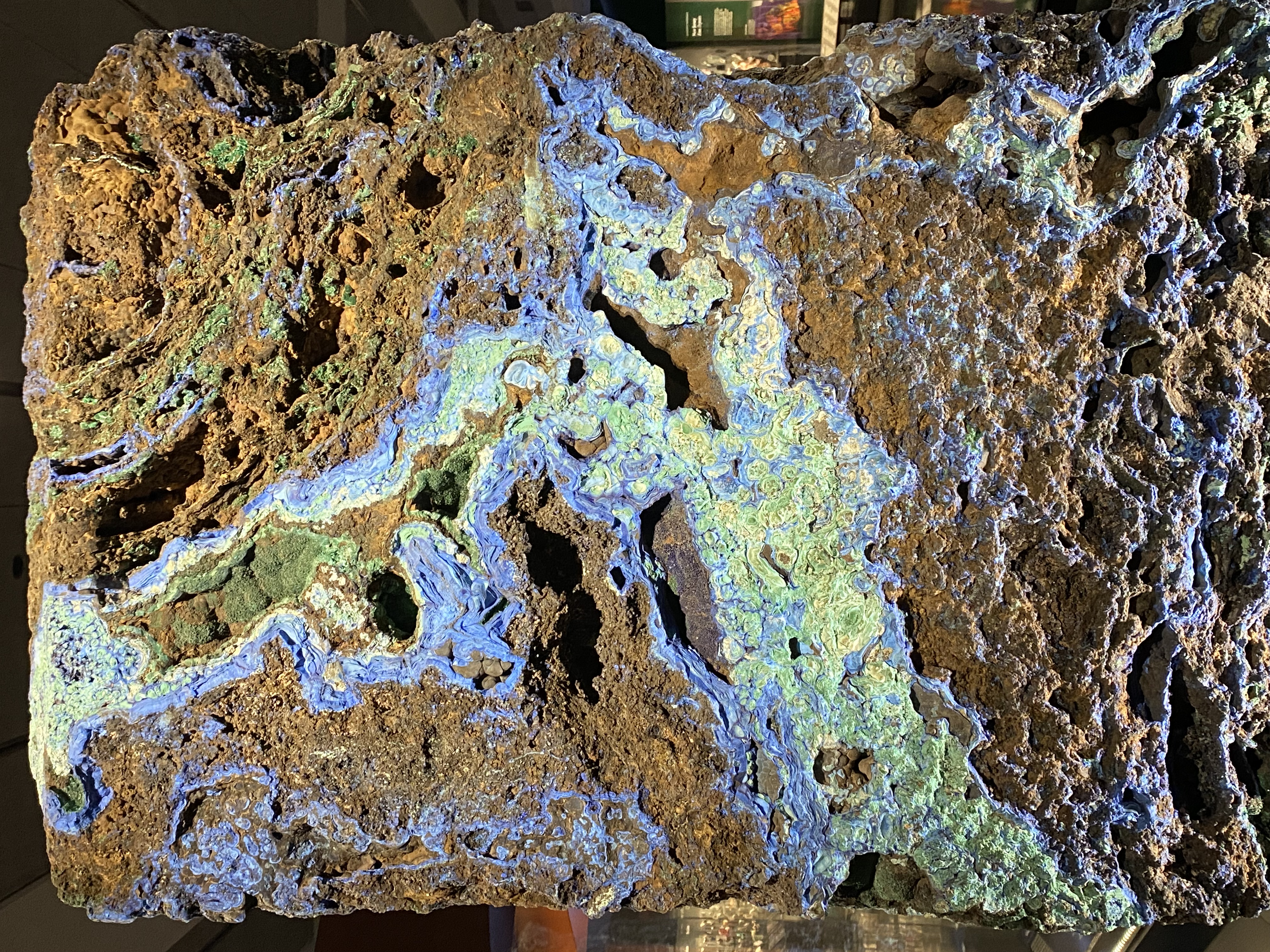Excursion to AMNH
November 16, NYC
During the tours through the fossil halls we were able to see how reptiles evolved over millions of years. In order to put the exhibit together logically, it followed a specific organizing principle which is a system used to structure the hall for a cohesive journey through the information. The fossil hall was organized to mirror a cladogram, a diagram that branches to show how species evolved from their ancestors. This made it very easy to understand how small adjustments over time led to vastly different species. Throughout the exhibit there were different physical models that you could touch so you could get a closer look at bone structures. There were also reconstructions of prehistoric organisms based on their fossils so you could understand how they would look. This made it interesting to compare it to modern fish. Certain graphics showed, by highlighting with color, what exactly evolved in the bone structure so parallels could be drawn between species. One highlight from the tour was learning the function of the hip structures in different reptiles and the difference between saurischian and ornithischian. Another interesting thing to learn was how dinosaurs came to have longer necks. That being increased rainfall leading to higher trees and thus adaptations in dinosaurs to have longer necks. Though, the exhibit contained some information that was outdated. Since the cladogram was embedded into the tile it could not be altered despite the basic organization no longer reflecting current understandings. The turtle display was placed according to the former belief that they were the first sauropsids but that was found to be untrue as they are closer related to birds and dinosaurs. There are also some misnamed models like one labeled as an apatosaurus when it was a different species. Changing the titles for the misnamed dinosaurs wouldn't be a difficult task but rearranging the location of the turtles would unfortunately take some effort as the cladogram is embedded into the tiles of the exhibit. I think keeping it where is is while including the information about it's unfortunate placement would be fine as it goes to show how we are still learning about these prehistoric reptiles to this day.

Model of Prehistoric Organism
My group then explored the Hall of Gems and Minerals. This had several different methods of organization, those being how the specimens formed, how humans use them, precious gems/carvings/jewelry, and the chemical attributes of minerals. Some of the most notable objects in the exhibit were the giant amethyst geode from Uruguay, a piece of petrified wood from a giant sequoia from Oregon, and a massive block of blue azurite and green malachite named the Singing Stone from Arizona. I feel like every sign provided all the basic information like the location and when it formed. It would have been interesting to include the chemical aspects in the signs showing the large pieces, possibly explanations on why the crystals form a certain way or why they are a certain color.

The Singing Stone
We also had the opportunity to watch the Space Show in the planetarium which was showing Worlds Beyond Earth. This documentary discussed the differences between Earth and other planets that has allowed it to inhabit life, also explaining the methods they used to gather data that brought them to those conclusions. The formation of the planets and their compositions was discussed alongside the organization of our solar system. It then went into describing different planets that had similarities to Earth and the space crafts we sent there to learn about their composition. The film discussed the moons Titan and Europa, explaining how although they have some similarities to our own Earth and Moon, it didn’t quite have the features that could sustain life. The formation of the early planets and their orbits was shown through computer simulations. Other processes like the creation of canyons on Mars and baby moons forming in Saturn’s rings were shown as well. It was explained how the simulations were based on data and images gathered from spacecraft sent to those areas. Something I found very interesting that I learned while viewing this documentary was how methane acts similarly to how water acts on Earth due to the low temperatures on Titan. There are lakes, rivers, and seas of liquid methane. Another interesting subject was the importance of Magnetic fields in fostering life on a planet. The magnetic fields on Earth generated by the movement of liquid metal in the outer core prevents solar winds, protecting the surface. Thus the cooling of Mars’ interior caused it to lose its magnetic field and thus its ability to sustain life.
Throughout the excursion, we could see different accommodations that allowed the Museum to be accessible to all types of visitors. Many of the exhibits and entrances were wheelchair and stroller accessible. For visitors that may be liking sight, there were physical models so they could have a better understanding of what was being presented. We also noticed how there were videos with subtitles so hard of hearing visitors could access that information.


